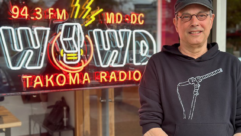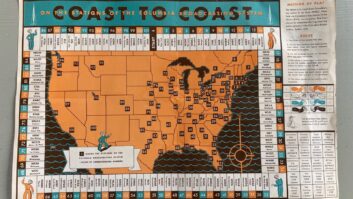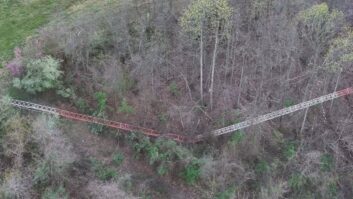Station employees everywhere know these are tough times for radio.
While the Bush administration and many economists have been avoiding discussion of recession in the general economy, it is clear our industry stumbled into it head-first last December. Shrinking revenues and rapidly falling profits have most radio owners and managers scrambling to shore up their operations.
Many stations have been unable to dodge the falling ax of staff layoffs, contract buy-outs, terminated contracts and restructuring. January and February were especially brutal. Five percent of the entire work force at Emmis and 2 percent of Citadel’s were sent packing. Many of our close friends and associates are suddenly gone, expunged from the payroll, the company e-mail and the LAN. Hiring freezes are still in place in many companies while positions that were vacated through attrition remain unfilled.
CHANGING CYCLES
I’ve been around long enough to see a falling business cycle play out at least four times. Starting in the 1970s we had the Arab oil embargoes and long lines at gas stations. Then in the early ’80s we got slammed with high stagflation and 21 percent interest rates. The early 1990s brought the Gulf War and another oil-induced recession. Finally, we all remember the dot-com bust and 9/11.
Dredging up memories of bad times is never much fun. But it can be instructive and enlightening.
Usually station engineers are exempt when recessions hit; it is other staffers who get pink slips. Traditionally, most of us can do a lot of things valuable to a station’s well being that others can’t. But since consolidation, if you’re the new kid on the staff with fewer skills, or an engineer who is perceived by management as “expendable” or “too expensive” for the return on investment, you’ve found yourself looking for a new gig.
We’ve seen capable engineers with years of experience and proud contributions to their owners’ bottom lines join the ranks of the unemployed. You know who you are.
And we’ve seen tons of examples in smaller and medium markets where full-time engineers were rolled out in favor of cheaper contractor or part-time engineering support arrangements. Not having to pay benefits unfortunately always saves the employers big money.
EXPAND YOUR SKILL SET
Surviving these downturns has become almost a ritual for many in our industry.
The message for all of us is that diversifying one’s professional job skills can help a lot and usually will pay big dividends. Multi-tasking and taking on more responsibility have almost always been invaluable insurance against layoff.
DJs have learned how to sell or become production specialists. Some jocks have acquired computer, Web-support or engineering skills. Account executives learned how to write copy or voice commercials. The better AEs advanced more quickly into management positions.
Traditional radio engineers who embraced the PC revolution became network admins. Others learned HTML, Flash and Java and became station Webmasters. Some pulled board shifts and did production. Some even became part-time AEs.
If you were a hard worker and willing to learn new tricks, you survived and probably even thrived. If you liked working with people and enjoyed the hustle, you may have even become a general manager.
The bottom line for anybody who wants to stay in this business and do well: Think and act like a successful GM. That means keeping the big picture in clear focus, and executing your specific job in a way that best supports the end product.
For radio, the product is content, whether it is entertainment, information or any other fulfilling and engaging personal experience with our medium. I have yet to see any employee who excelled at that get fired or laid off during tough times.
TERRIBLE TIMING
The current cycle of retrenchment couldn’t come at a worse time as increased competitive pressure from new digital media alternatives continues to cut into radio’s share of the audience and the money pie.
Wall Streeters and new media pundits have been dissing radio for quite a while. It’s painful to watch as satellite radio and the Internet get all the attention. For many, the HD rollout seems too little, too late and too flawed.
Everyone who has a stake in our proud industry is beginning to wonder: Is this recession going to be relatively short-lived, and will we spring back to exuberant life as we always have in the past … or, perish the thought, has a big meteor just struck and we’ve become mass media dinosaurs destined to relatively quick extinction?
Owners and managers have been wringing their hands for some time, wondering how best to “leverage their digital assets” to more effectively compete with the new media. The onset of recession and the need to cut staff and reduce expenses makes this challenge much more difficult than if times were good.
This time around, radio cannot afford to ignore the need to press on and develop new initiatives to bolster and save the business. It’s not just about hanging onto our existing audience share, which by all measures is aging. Radio’s slow but steady erosion has been most pronounced in the younger demos. The theory is that if the high school and college crowds grow up with little interest or regard for radio, they won’t use it as they grow older. Whether that fear will play out in reality is debatable, but it’s scaring the hell out of a lot of radio people.
Radio World and industry trade journals that concentrate on the sales and business side of radio are filled with news and stories about the “digital challenge” in every issue. Radio Ink Publisher B. Eric Rhoads is holding seminars for managers and owners on how to “harness the digital engine” to be able to grow, if not save the radio business moving forward. Probably not enough engineers are paying close attention to the ongoing debate and the conundrum radio is facing.
Rhoads is an eternal optimist about radio and sees an even brighter future, if we get our brains and arms around making radio a significant player on the new media platforms.
Take notice, engineers: A big part of doing this successfully involves understanding and implementing the underlying technologies. It’s more than obvious to me that this is where the best and most exciting opportunities lie for the next generation of radio engineers.
THE LEARNING NEVER STOPS
We all realize that the radio technology of today and tomorrow is very much integrated with that of personal computing, networking and the Internet.
If you are still working as a station engineer but have not yet fully embraced this reality and are not learning all you can about PCs and IP, your continued employment status could be in jeopardy.
But it won’t stop there. Radio’s new strategy to survive and stay relevant includes pushing farther into the Internet streaming space. If all you’ve had to worry about so far is setting up a PC to run your station’s program audio stream to hit the Internet, a lot more excitement is on the way.
Special event video podcasts have become regular features on many radio station Web sites. Video cameras, lighting equipment, green screens and editing software are now required tools in most successful radio station promotions and Web departments.
The most significant innovation for radio is video streaming. Fully produced live in-studio video streams of entire shows are now playing on station Web sites in a number of major markets. And it’s not just a single cheap Webcam fixed on the host. “Imus in the Morning” on MSNBC has come and gone from WFAN, but more video exposure of popular live radio shows is poised to accelerate the attraction of radio’s Internet presence.
Station engineers who ramp themselves up on the new media learning curves to be able to install, maintain and optimize these additions to radio’s technology arsenal will be in demand. They will insure themselves a favored place in the structure and the look and feel of radio’s evolving future, no matter how or where the listeners and the viewers tap in.
LIVE AND LOCAL RULES
Beyond figuring out the best ways of handling digital assets, the larger question of how radio more effectively manages its traditional over-the-air programming services to stop the slow bleed of lost listeners presents a more urgent challenge.
Whenever I leave a brain-storming session where lots of interesting ideas get tossed around, we are consistently left with only one that really matters: Radio can only survive and thrive if it super-serves the local audience, no matter what the format.
The lion’s share of content competition against radio coming from other new media is national or generic, with little or no local focus. The notable exceptions might be cellphone texting plus Internet chat and IMing amongst local friends. And you’d have to include Googling to find the closest movie house or hot new restaurant.
Virtually everything else is homogenized for consumption anywhere. Local communities and their surrounding commerce market areas still matter in America. The sense of attachment and belonging by the local citizens goes much deeper than just wondering about weather and traffic conditions.
Local service is the one basic ingredient of radio’s success over its long and storied history that remains its core strength. Those stations that have cut back local service commitments and switched to automated national satellite formats may have saved some operating expense, but in the end they usually lose much more.
The list of call letters falling into that category is too long and is undoubtedly at the root of our industry’s malaise. Giving up on “live and local” guarantees most stations a down or out position in the ratings.
Look at stations that have maintained high ratings and success in their respective markets and you will find practically all of them work very hard to maintain a high level of support for matters of local interest.
That’s a given for news/talk stations but even for many music formats, this usually includes coverage of local news, local public affairs and politics, local weather and traffic reports, local team sports, local school events, county fairs, local concerts and shows, and almost any significant human interest activity occurring in and around their service area.
The one arena that radio has traditionally not supported well is local music. Mass appeal formats have never found enough room on their playlists to do this. So it’s been left to AAA stations plus various NCE and LPFM outlets to provide at least some exposure for home-grown musical groups.
The more forward-thinking stations are already featuring live performance segments by up and coming local groups during regular programming. As HD rolls out more supplemental channels and more unique format offerings appear, we should see more stations showcase local musicians.
We will get through this recession, hopefully sooner rather than later. By the time you read this, around NAB convention time, staff cuts and expense reductions should be mostly behind us. A big contingent of engineers will be MIA at NAB this year, especially my many Clear Channel brothers.
Fewer people are now doing more of the work at most stations, and the workload is only increasing. All of the fat and much of the meat are gone. We’re down to bone level. Yet many challenges still remain.
The pressure on radio to hold its legacy as a dominant resource for consumer infotainment will not diminish. Stations that have been successful will continue to succeed if they keep doing the things that have made radio special and have separated us from the other non-local media services.










